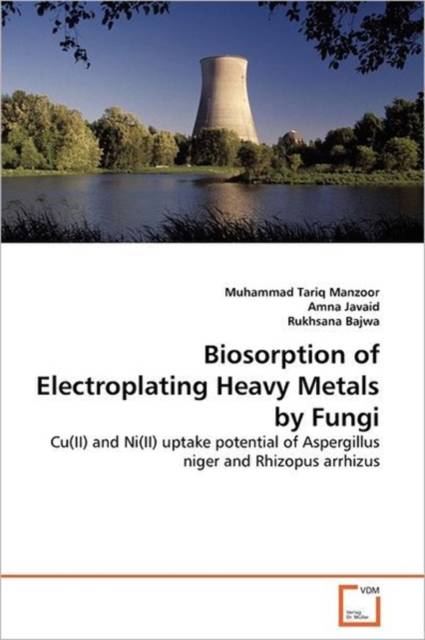
- Afhalen na 1 uur in een winkel met voorraad
- Gratis thuislevering in België vanaf € 30
- Ruim aanbod met 7 miljoen producten
- Afhalen na 1 uur in een winkel met voorraad
- Gratis thuislevering in België vanaf € 30
- Ruim aanbod met 7 miljoen producten
Zoeken
Biosorption of Electroplating Heavy Metals by Fungi
Muhammad Tariq Manzoor, Amna Javaid, Rukhsana Bajwa
Paperback | Engels
€ 48,45
+ 96 punten
Omschrijving
Biosorption is being demonstrated as a useful alternative to conventional systems for the removal of toxic metals from industrial effluents. Metal affinity to the biomass can be increase by pre treating the biomass with different chemicals. Current study was deigned to assess the Ni(II) and CCu(II) removal capability of two microfungi viz. Aspergillus niger and Rhizopus arrhizus. Biomass of both fungal species was pretreated with alkalies, acids and detergents. For the successful application of biosorption crucial parameters like influence of initial metal ion concentration and desorption/reutilization were also performed. To check the practical potential of adsorbents, metal uptake capability of test fungal biosorbents was assessed with real industrial effluents. This book is useful for those who are working on treatment of wastewater using fungal biomass.
Specificaties
Betrokkenen
- Auteur(s):
- Uitgeverij:
Inhoud
- Aantal bladzijden:
- 56
- Taal:
- Engels
Eigenschappen
- Productcode (EAN):
- 9783639358834
- Verschijningsdatum:
- 16/06/2011
- Uitvoering:
- Paperback
- Formaat:
- Trade paperback (VS)
- Afmetingen:
- 152 mm x 229 mm
- Gewicht:
- 95 g

Alleen bij Standaard Boekhandel
+ 96 punten op je klantenkaart van Standaard Boekhandel
Beoordelingen
We publiceren alleen reviews die voldoen aan de voorwaarden voor reviews. Bekijk onze voorwaarden voor reviews.











